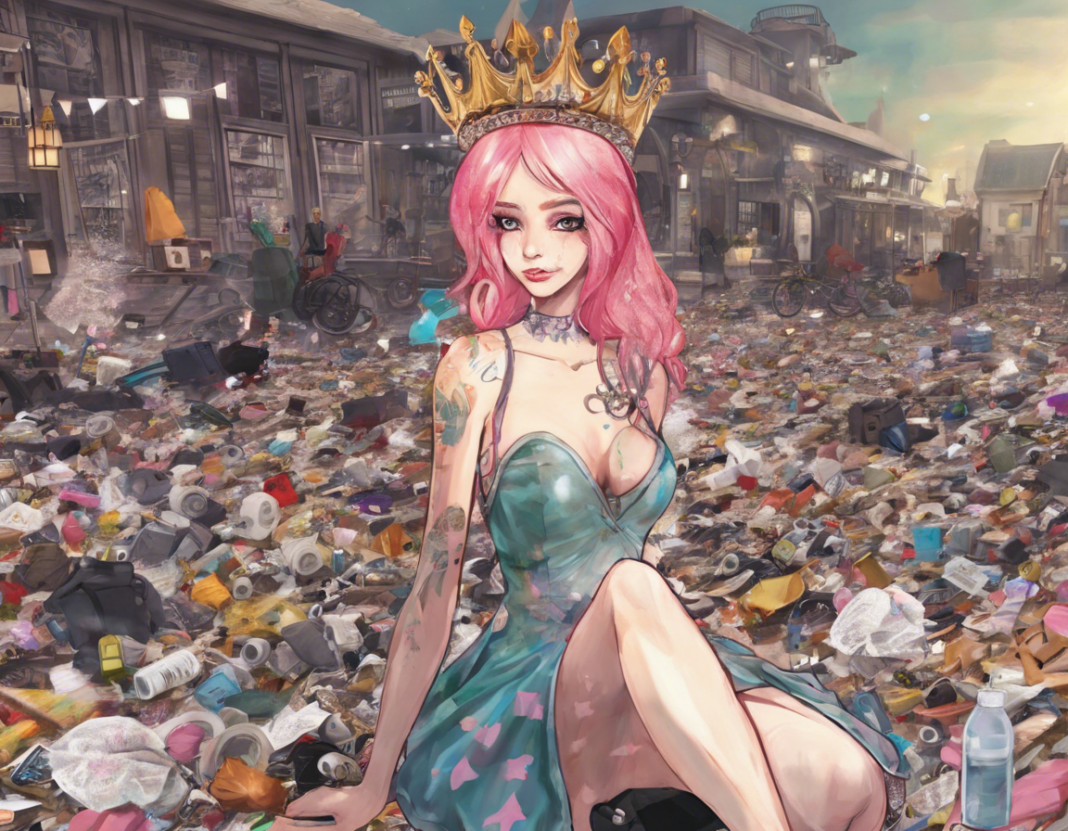In the age of sustainability and environmental consciousness, the concept of waste management has undergone a significant transformation. From the traditional “out of sight, out of mind” approach to a more circular and responsible system, waste management has evolved to become a critical aspect of modern living. One intriguing component of this evolution is the rising prominence of the idea of upcycling – the process of converting waste materials or useless products into new materials or products of better quality or a higher environmental value.
At the heart of the upcycling movement lies the figure of the “trash princess” – an individual or entity that specializes in turning waste materials into innovative and valuable creations. The trash princess embodies the spirit of creativity, resourcefulness, and sustainability by breathing new life into discarded items and transforming them into something beautiful and functional. This article delves into the world of upcycling, exploring the role of the trash princess, the impact of upcycling on the environment and society, and the potential for this phenomenon to shape a more sustainable future.
The Rise of the Trash Princess
In a world inundated with disposable products and excess waste, the emergence of the trash princess signifies a shift in mindset towards conscious consumption and resource maximization. These modern-day artisans possess a keen eye for spotting potential in the discarded and the forgotten, seeing not trash but treasure in the piles of waste that litter our planet.
The title of “trash princess” is not limited by gender or age but is a symbol of the intrepid individual who dares to challenge conventional notions of value and beauty. From turning old plastic bottles into eco-friendly fashion accessories to transforming scrapped metal into sculptural masterpieces, the trash princess embodies a blend of artistry and environmental responsibility that captivates audiences and sparks inspiration.
The Art of Upcycling
Upcycling is more than just a hobby or a passing trend; it is a form of creative activism that aims to disrupt the linear model of production and consumption. By salvaging materials that would otherwise end up in landfills or incinerators, upcyclers not only reduce waste but also minimize the demand for new raw materials, thereby lessening the strain on natural resources.
The essence of upcycling lies in the process of transformation. Old denim jeans can be repurposed into trendy tote bags, discarded furniture can be given a new lease on life with a fresh coat of paint, and vinyl records can be molded into unique wall art. The possibilities are as limitless as one’s imagination, and the only constraint is the willingness to see value where others see only rubbish.
Environmental Impact and Sustainability
At its core, upcycling is a sustainable practice that champions the principles of reuse, repair, and repurpose. By extending the lifespan of products and materials, upcycling helps to reduce the volume of waste generated and the carbon footprint associated with manufacturing new items. This approach not only conserves energy and resources but also mitigates the harmful effects of waste disposal on the environment.
Furthermore, upcycling serves as a powerful tool in the fight against climate change and biodiversity loss. By diverting waste from landfills and oceans, upcyclers contribute to the preservation of ecosystems and the protection of wildlife habitats. In a world grappling with the consequences of overconsumption and pollution, the work of the trash princess offers a ray of hope and a tangible solution to combatting environmental degradation.
Social and Economic Implications
Beyond its environmental benefits, upcycling holds significant social and economic implications. By fostering a culture of innovation and collaboration, upcycling empowers individuals and communities to take control of their consumption habits and reduce their reliance on mass-produced goods. This grassroots movement not only stimulates local economies but also fosters social cohesion and community engagement.
Moreover, upcycling has the potential to drive job creation and entrepreneurship opportunities, particularly in regions grappling with high levels of unemployment and limited resources. By tapping into the creativity and ingenuity of its people, upcycling can spur economic growth and development, while simultaneously promoting inclusivity and equality.
The Future of Upcycling
As we look to the future, the role of the trash princess in the upcycling movement is poised to become even more significant. With climate change and environmental degradation presenting pressing challenges for the global community, the need for sustainable solutions has never been more urgent. The innovative practices and holistic approach to waste management exemplified by the trash princess offer a blueprint for a more circular and regenerative economy.
By embracing the principles of upcycling and supporting the work of the trash princess, individuals, businesses, and governments can collectively contribute to a more sustainable and resilient future. Whether through upcycling workshops, community initiatives, or policy interventions, there are countless opportunities to harness the power of creativity and collaboration in the pursuit of a waste-free world.
In conclusion, the revival of waste through the lens of the trash princess represents a revolution in how we perceive and interact with the materials that surround us. By recognizing the inherent value of waste and reimagining its potential, we have the opportunity to transform our relationship with the planet and pave the way for a more harmonious and sustainable existence. The trash princess may have humble beginnings, but her impact is nothing short of transformational.
